Did you know? Nearly 20% of newly planted trees fail within the first year due to avoidable beginner errors. Understanding the right techniques from the start is crucial for long-term tree health.

Are you gearing up to plant a tree in your yard or community? Tree planting is a rewarding step toward sustainable living, shade, and increasing property value. However, nearly one in five newly planted trees fail in their first year—not because they’re inherently weak, but because beginners often fall for avoidable pitfalls. Whether you're planting your first sapling or looking to improve your method, this guide provides actionable tips and expert techniques to boost your tree’s survival rate —starting today!
Mastering the Basics: How to Plant a Tree Successfully
Starting with the basics is crucial for anyone thinking about planting a tree . Success begins with the right approach, ensuring your tree not only survives, but thrives for decades. The planting hole should be two to three times the width of the root ball and just as deep. Loosen the native soil and mix in compost if needed. After gently removing the tree from its container or burlap, tease apart any circling roots that could hinder the tree’s development. Place the tree in the center of the hole, making sure the root collar sits at ground level, which is essential for preventing rot and disease. Fill the hole with soil, tamping down gently to eliminate air pockets and create good root contact . Water deeply to settle the soil around the roots and apply mulch to conserve moisture. Remember, the proper planting technique ensures your tree’s roots grow strong and resilient, ready to withstand weather fluctuations and promote lush, healthy growth.
- Dig a planting hole 2-3 times wider than the root ball
- Check that the root collar is level with the ground
- Loosen the root ball if roots are circling
- Backfill with a mix of native soil and compost for good soil structure
- Water deeply after planting to eliminate air pockets
- Mulch to retain moisture and suppress weeds
The Most Common Mistakes When Planting a Tree—and How to Sidestep Them
Even experienced gardeners can make mistakes when it comes to planting a tree . One of the biggest errors is planting the tree too deep or too shallow, which can suffocate the root system or expose roots, making them vulnerable to drought. Using the wrong soil, failing to remove burlap or wire from the root ball , neglecting to eliminate air pockets, or picking an unsuitable species for your climate also top the list of chronic issues. Ignoring early aftercare—such as proper watering and mulching—often leads to unnecessary stress on the tree. By recognizing these issues upfront, you can ensure your newly planted trees have the best chance to grow strong and healthy.
Plant a Tree with the Right Method: Hand Plant vs. Machine Planting
| Method | Success Rate | Typical Costs | Best Scenarios |
|---|---|---|---|
| Hand Planting | High (esp. with focused care) | Low, suitable for small batches or residential projects | Gardens, yards, restoration areas, individual trees |
| Machine Planting | Moderate to High (depends on soil and site) | Higher, ideal for large-scale or commercial planting | Forestry projects, agricultural use, urban parks |
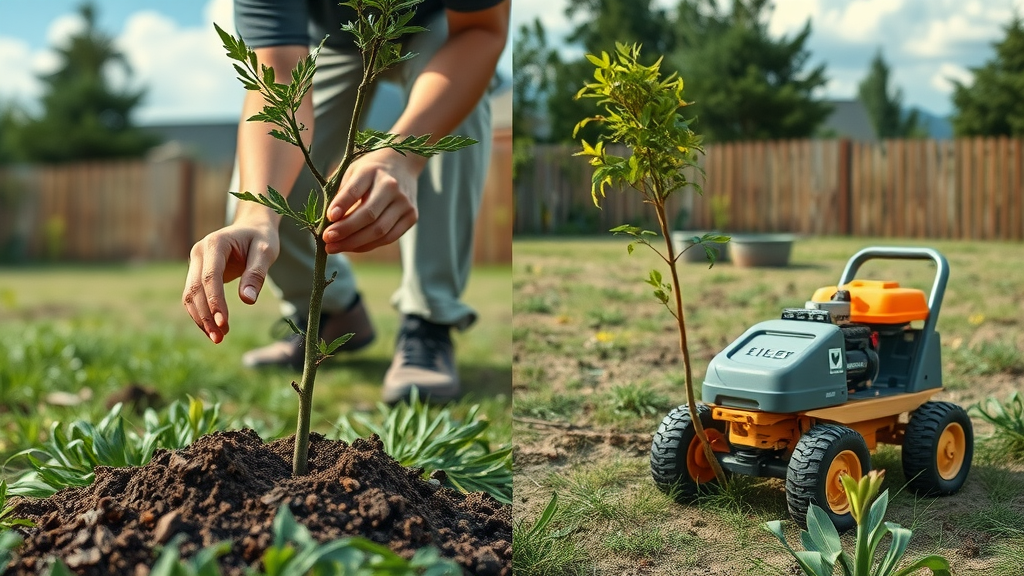
Hand planting offers better individual attention for each sapling and is perfect for home gardeners or community projects. Carefully handling the root mass ensures optimal root contact with good soil , reducing transplant shock and promoting steady growth. Machine planting , often used for mass planting, can speed up the process and is cost-effective when planting hundreds to thousands of trees. However, this method sometimes leaves air pockets or exposes seedlings if not properly supervised, impacting the success rate . Choosing the right method depends on your project scale and the level of care you can provide.
Hand Planting Techniques for Planting a Tree: Step-by-Step Guide
Mastering hand planting techniques is foundational for smaller scale or high-stakes projects, such as in parks, streets, and yards. Begin by measuring your hole width, which should be two to three times the diameter of your tree’s root ball . Dig the hole just deep enough so that the bottom of the root sits flush with the ground—the root collar must be visible at the surface. Loosen compacted soil at the base for easier root penetration. If the root mass appears tangled, gently untangle to prevent circling. Place your tree in the hole, ensuring it's upright and centered. Backfill one-third with native soil , press lightly, water to help eliminate air pockets , and repeat until the hole is full. Apply a generous layer of mulch, but never touch the trunk directly, as this can lead to rot.
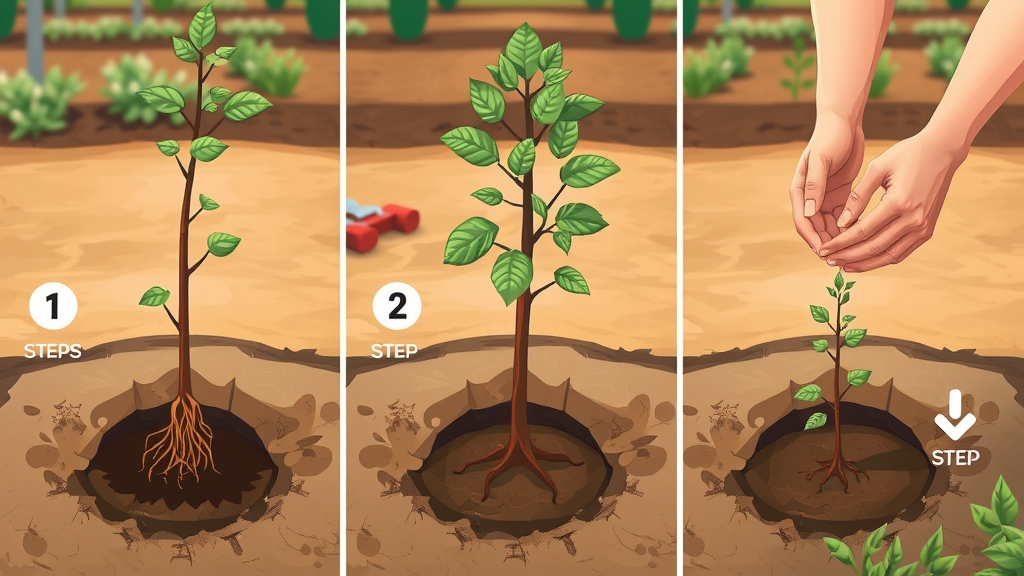
After your tree is in the ground, provide slow, deep watering with soaker hoses or drip irrigation . This will ensure the soil around the roots stays evenly moist but not soggy, helping your tree establish quickly. Regularly check the tree in the first few months for signs of stress such as wilting or discolored leaves. Adjust water and mulch as needed for optimal proper watering and soil health.
Top 7 Mistakes to Avoid When You Plant a Tree
- Root circling: Not spreading out tangled roots leads to poor root system development.
- Wrong depth: Planting too deep suffocates roots; too shallow exposes them to drought.
- Poor soil preparation: Failing to amend with good soil or native soil hinders growth.
- Ignoring maintenance: Skipping watering, mulching, or monitoring for pests.
- Incorrect species choice: Planting trees that don’t suit your local climate or soil.
- Wrong timing: Not aligning planting time with the best season for root establishment.
- Neglecting aftercare: Forgetting to protect trees from wind, animals, or lawn equipment.
"The best time to plant a tree was 20 years ago. The second-best time is now." – Chinese Proverb
Choosing the Right Tree and Site for Successful Planting a Tree
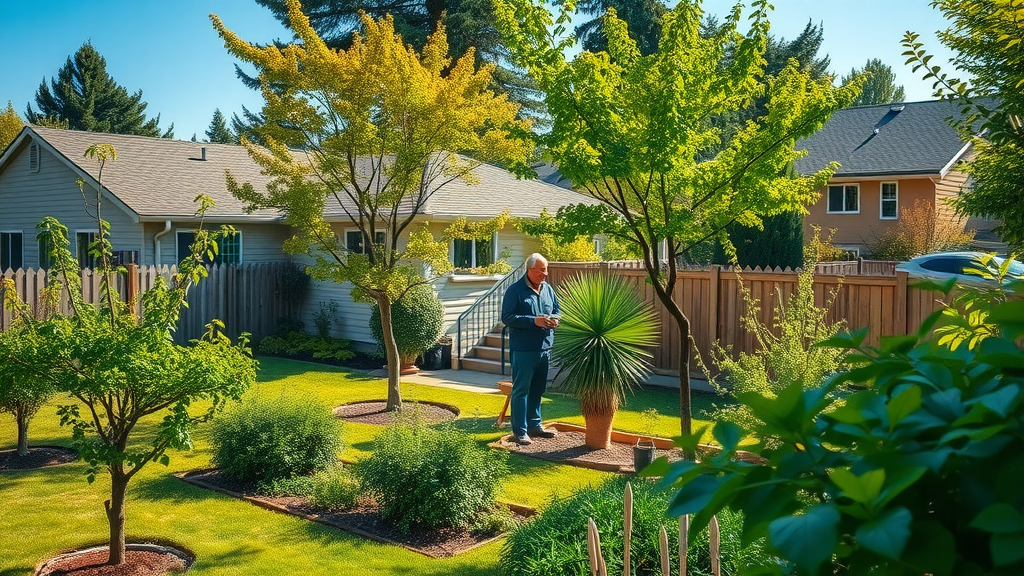
Selecting the right tree species and planting site dramatically increases your success rate. Assess your area’s light exposure, soil moisture, drainage, and available space. Native species integrate better into existing ecosystems and require less maintenance once established. Avoid planting under power lines or too close to buildings where roots or branches will eventually cause conflict. Also factor in how large the tree will become in 10, 20, even 30 years, ensuring your site can accommodate mature growth.
How to Select the Best Trees to Plant in Your Area
The best trees to plant vary by region—talk to local nurseries or extension services to identify species that are disease-resistant, climate-resilient, and ecologically beneficial. In northern climates, sugar maple, oak, and spruce do well; in warmer zones, consider crape myrtle, magnolia, or live oak. Choose trees with deep, healthy root systems and avoid those with compacted roots wrapped in burlap for too long. Matching species with your region’s rainfall, soil type, and light levels sets the foundation for a robust, attractive landscape.
Optimal Timing: When Should You Plant a Tree?
Timing isn’t just a detail—it's central to the proper planting of a tree. The ideal season depends on your climate. In temperate areas, early spring or fall provides the mild weather that encourages root establishment before the extremes of summer or winter set in. In hot, dry regions, autumn allows trees to take advantage of cooler temps and winter rains to settle in. However, planting during the summer or late spring is risky due to increased evaporation and heat stress on delicate root mass . Pay attention to weather forecasts and soil moisture before planting, and avoid working in heavy clay when soils are overly wet.
- Spring: Great for most species as cool soil and rain encourage root growth; avoid late spring/summer heat.
- Fall: Often the best window—roots grow while leaves are dormant, reducing water stress.
- Winter: Only in mild climates, provided the ground isn’t frozen. Pros: low stress, less competition from weeds. Cons: slower initial root growth.
Proper Aftercare After You Plant a Tree: Watering, Mulching, and Protection
The success of your newly planted tree hinges on diligent aftercare. Right after planting, water deeply and consistently for the first growing season—using soaker hoses or drip irrigation for slow, thorough penetration. Mulch with wood chips or leaf litter in a 2-3 inch layer, but keep it several inches away from the trunk to prevent rot and disease. Mulch not only conserves moisture but also suppresses weeds and maintains stable soil temperature.
Protect your young tree from wind damage, animal browsing, and accidental injury from lawn mowers or weed trimmers. Use stakes only if planting in a windy location or unstable ground—but avoid tying too tight, as the trunk needs to flex and strengthen naturally. Prompt action on watering, mulching, and protection makes all the difference in turning a newly planted tree into a thriving, long-lived asset.
What You'll Gain by Planting a Tree Correctly
- Stronger growth: Good root contact and proper technique set the stage for healthy, sustained growth.
- Better survival rate: Correctly planted trees are less likely to suffer from disease, drought, or mechanical injury.
- Positive environmental impact: Trees clean air, provide shade, and contribute to biodiversity.
- Cost savings: Fewer losses mean less money and effort spent on replacements.
- Aesthetic value: Beautiful, thriving trees enhance property and neighborhood appeal.
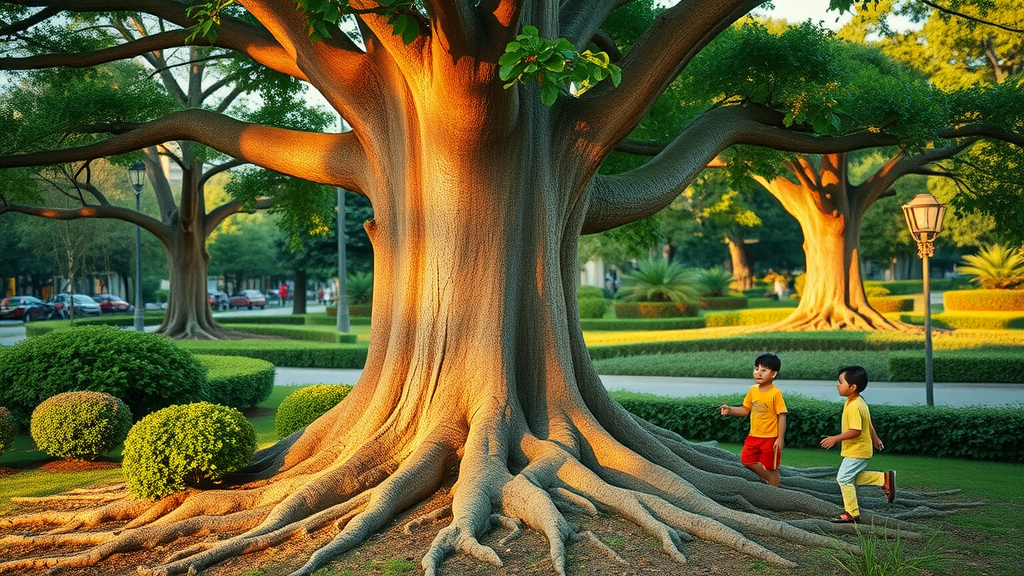
People Also Ask
What is the proper way to plant a tree?
The proper way to plant a tree involves digging a hole two to three times wider than the root ball but no deeper, loosening tangled roots, ensuring the root collar is at ground level, backfilling with native soil , watering deeply, and mulching. Eliminate all air pockets to establish root contact . Finally, regular watering and protection help the tree establish efficiently.
What is the 10 20 30 rule for tree planting?
The 10-20-30 rule is a guideline for urban and community forestry diversity: no more than 10% of any single tree species, 20% of any single genus, and 30% of any tree family should make up the total population. This prevents pest and disease outbreaks from eliminating large portions of planted trees in one area.
Which is the most common mistake made in tree planting?
The most common mistake is planting too deeply, causing the root collar to be buried and leading to root rot. Other issues include failing to eliminate air pockets, using improper soil or mulch, and neglecting aftercare such as proper watering and protection.
What is the best month to plant a tree?
The best months to plant a tree are usually early spring (March-April) or fall (September-November), depending on your climate. These periods offer cooler temperatures and more consistent rainfall to support root establishment.
Frequently Asked Questions on Planting a Tree
- How often should you water after planting a tree? For the first few months, water deeply once or twice a week (more often in dry weather), ensuring soil around the roots is moist but not waterlogged.
- How long does it take for a tree to establish after planting? Most trees take one to two years per inch of trunk diameter to establish, during which deep, regular watering is essential. After establishment, most trees tolerate normal rainfall.
- Should you stake a newly planted tree? Stake only if the site is windy or the tree is at risk of toppling. Remove stakes within one year so that the trunk can flex and develop strength naturally.

Key Recommendations for Anyone Wanting to Plant a Tree
- Plan ahead: Pick the right species and site for your specific environment
- Always expose the root collar at the surface
- Prepare a broad, shallow planting hole with loosened native soil
- Backfill and tamp soil gently to eliminate air pockets
- Water deeply and mulch to conserve moisture—never pile mulch against the trunk
- Stake if needed, but don’t restrict trunk movement
- Monitor newly planted trees for pests, disease, and water needs the first 2-3 years
Ensure the Success of Your Next Planting a Tree Project
By following these expert steps—choosing the right location and species, using proper hand planting or machine planting methods, and maintaining diligent aftercare—you can turn every planting a tree project into a lasting success. Get started now for a greener tomorrow!
 Add Row
Add Row  Add
Add 

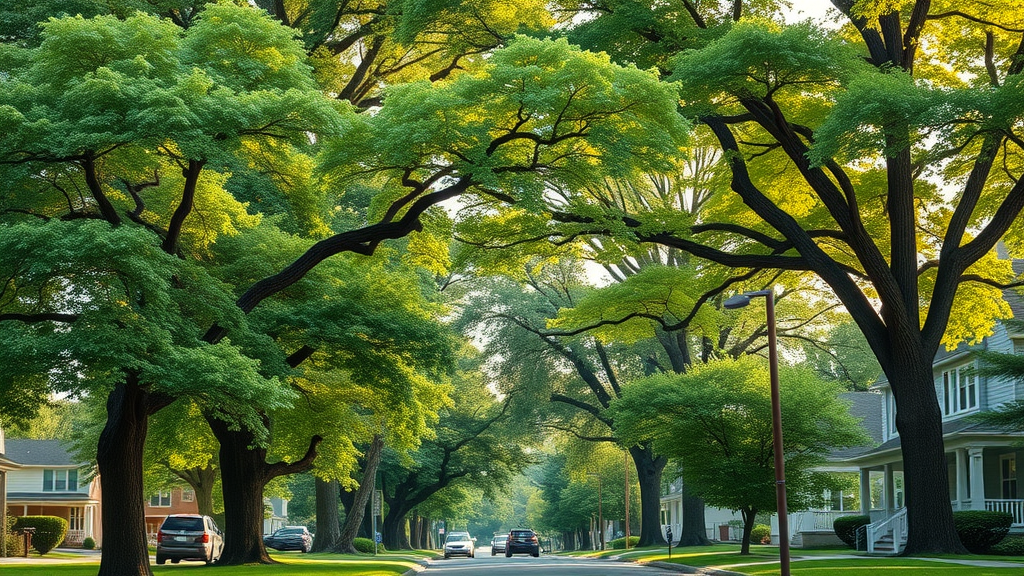
Write A Comment